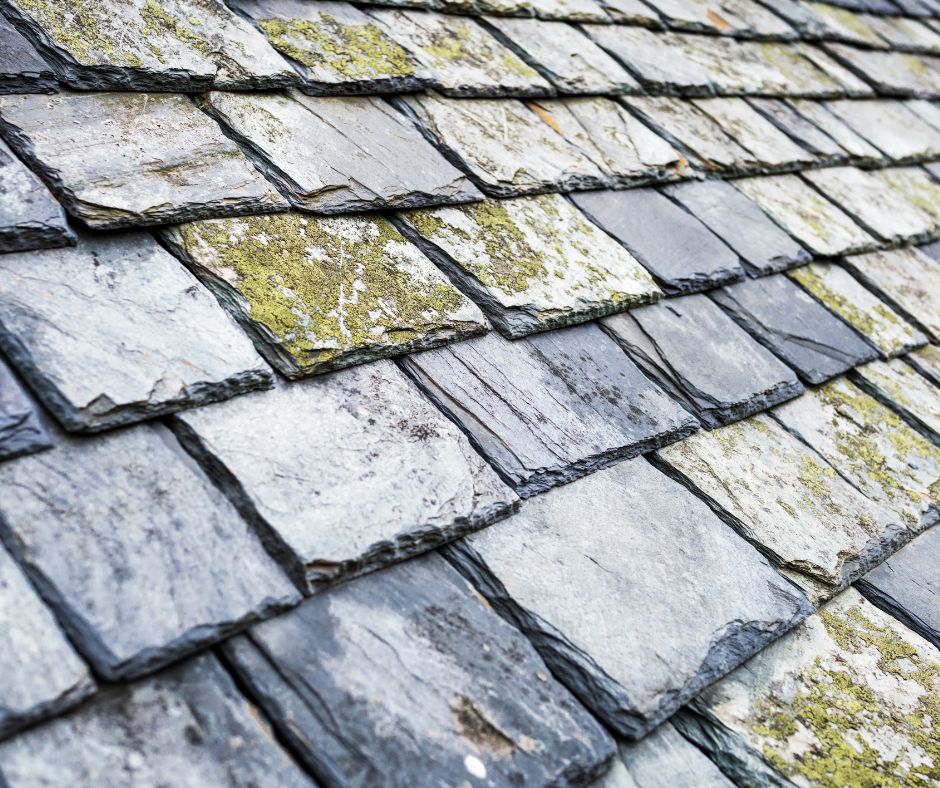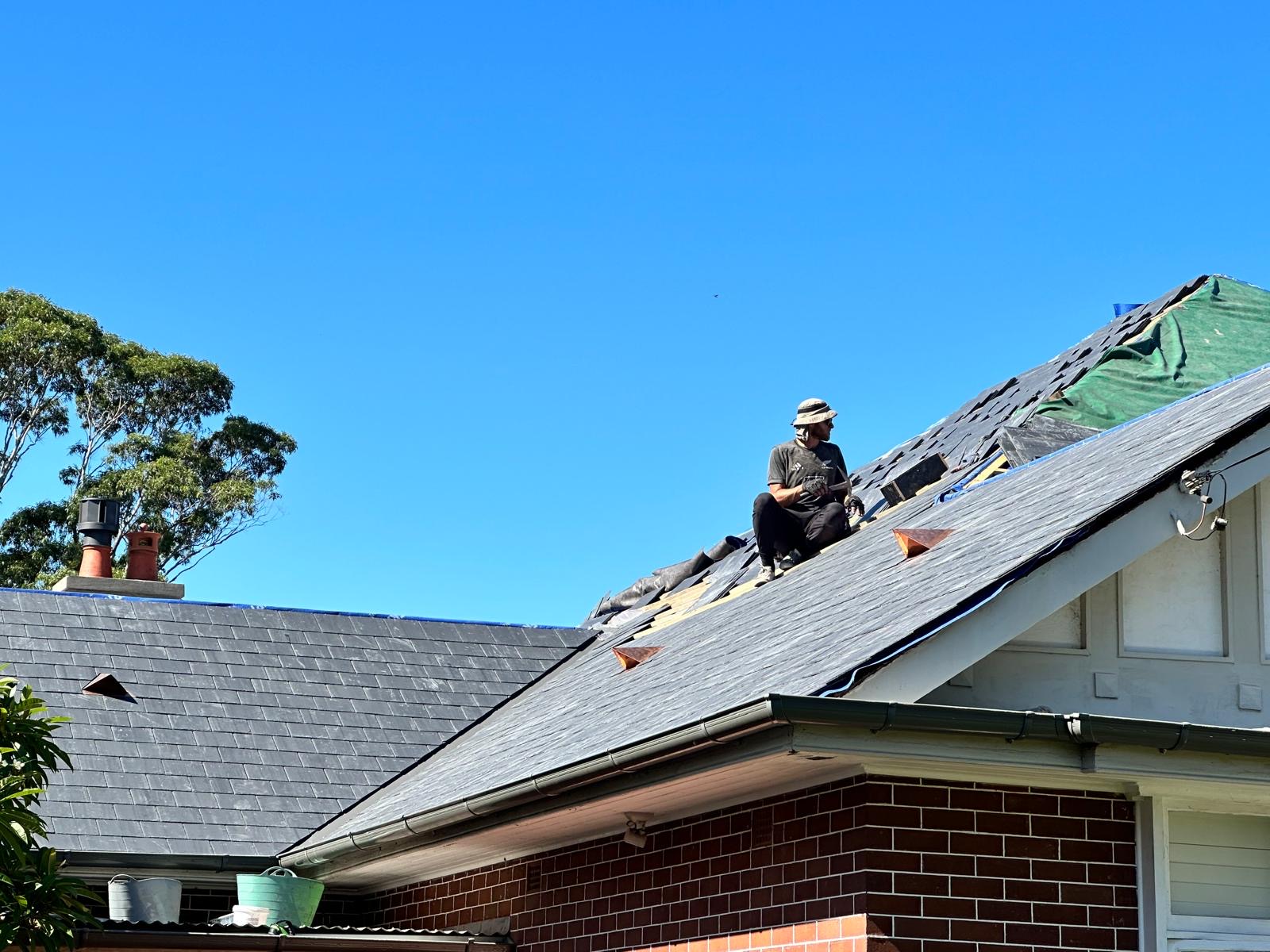Swiftly Recognise the Critical Signs of Slate Roof Damage
Should you observe issues such as displaced or fractured tiles, noticeable water stains forming on ceilings, compromised flashing, cracked ridge mortar, or an accumulation of slate debris in your gutters, it is imperative to act swiftly as your slate roof may be in urgent need of repairs. Additional concerning indicators include visible sagging, unexpected leaks following rain, or signs of water-related damage around chimneys and roof valleys. To prevent potentially exorbitant structural damage and to maintain the longevity of your roof investment, it is crucial to schedule regular roof inspections. Early identification of these problems can save you from extensive future repairs and preserve your home’s integrity.

Understand the Impacts of Water Damage Arising from Leaking Roofs
Many homeowners remain unaware of problems with their slate roofs until unsightly water stains manifest on ceilings or water marks become evident on walls. Although slate roofs are renowned for their remarkable durability and extended lifespan, they are not immune to wear and tear over time. Components, including nails, can rust, flashing may become detached, and one or two tiles might shift sufficiently to permit water intrusion. Surprisingly, a minor, persistent leak—rather than a significant storm—can lead to considerable damage, gradually exacerbating the situation over time.
Being able to identify early warning signs is essential in preventing you from incurring a much larger repair bill down the line. Below are crucial indicators that suggest your slate roof requires immediate professional attention and repair.
1. Spotting Water Marks on Ceilings as Vital Indicators of Damage
The emergence of a yellow-brown ring on your ceiling transcends being just an unsightly stain; it acts as a critical warning signal. Water has the potential to traverse through internal structures for several metres before finally dripping onto a ceiling area. By the time you observe it, the leak has typically been active for a considerable duration. Commonly, water infiltrates at roof joins or near gutter installations, with the marks usually appearing in cornice areas, close to chimneys, or beneath roof valleys. It is essential to take ceiling stains seriously as they often indicate underlying issues.
2. Identifying Shifting or Uneven Slate Tiles as Major Red Flags
Slate tiles are installed in tight rows, so if even one tile begins to shift or dip, it frequently indicates that the underlying nail has failed. Should multiple tiles exhibit this issue, it may suggest that the battens or underlay have been compromised. While a few loose tiles might be a simple fix, a larger area of displaced tiles signals that your roof requires immediate attention to avert further damage and costly repairs.
3. Discovering Slate Fragments in Gutters or on the Ground as a Warning Signal
Should you find fragments of slate scattered in your gutters or, worse, on the ground following wind or rain, it typically signifies that the tiles are either cracking or crumbling. This degradation may result from age, impact, or loose fixings. This concern acts as one of the earliest signs indicating that your roof requires inspection and potential repairs, even if it appears visually acceptable from the street view.
4. Evaluating Warped, Lifted, or Rusted Flashings as Possible Water Entry Points
Lead flashing serves as a protective barrier around crucial joints, such as those near chimneys, skylights, and roof valleys. When the flashing becomes cracked, lifted, or begins to corrode, it creates a potential entry point for water. While this damage might be difficult to spot from the ground, it is often evident from the rooftop. If your roof is older than 20 years and the flashing has not been replaced, it may be time for an upgrade to prevent further complications and ensure your roof remains watertight.
5. Correcting Cracked Mortar Along the Ridge or Gables Before They Become Major Issues
Cracked or loose ridge capping is a common concern associated with older roofs. Natural elements such as rain, wind, and sun gradually erode the mortar over time. If this problem is not addressed promptly, it can lead to water seeping beneath the tiles, resulting in more significant damage. Generally, this issue can be rectified with a straightforward repair instead of necessitating a complete re-roofing, provided it is identified early on.
6. Heeding Unusual Ticking or Dripping Sounds After Heavy Rain as a Warning
This may seem unusual, but one of the first indicators of a leaking slate roof is the sounds it produces. If you hear ticking, dripping, or the sound of water trickling down inside walls after a storm, this should raise immediate alarm bells. Such noises imply that water is moving behind the scenes, signalling the urgent need for professional intervention before the next rainfall exacerbates the situation and leads to further damage.
7. Assessing Recent Roofing Work for Any Potential Damage
It is more common than one might believe to encounter issues following recent roofing work. Scaffolding from other trades, the installation of solar panels, or gutter repairs can inadvertently cause damage to slate tiles. Even traversing a slate roof without adequate knowledge of foot placement can result in cracking or dislodging tiles. If you have noticed changes following any roofing work, it is prudent to have it inspected to ensure the integrity of your roof remains intact.

Taking Proactive Steps: Schedule Your Roof Inspection Today
If any of the aforementioned signs resonate with your current situation, the next critical step is to arrange a comprehensive inspection. A qualified roofer with expertise in slate roofing can adeptly differentiate between normal wear and tear and issues that necessitate prompt repair.
A thorough inspection involves more than just a cursory glance; it requires a detailed examination of the condition of the battens, sarking, flashing, and the roof’s ventilation systems. In some instances, a few tiles may require replacement, while others may necessitate extensive repairs. The key is to be proactive and identify potential issues before water damage has the chance to escalate into a more serious situation.
Contact us today for a complimentary roofing quote and take the vital first step in safeguarding your home from potential damage.
The Article: Slate Roof Repair: Signs You Need to Act Now first appeared on https://writebuff.com
The Article Slate Roof Repair: Urgent Signs You Shouldn’t Ignore Was Found On https://limitsofstrategy.com


It’s intriguing how often roof damage goes unnoticed until it leads to significant interior issues like water stains. In my own experience as a homeowner, I learned the hard way about the importance of routine inspections after I had to deal with a leak that appeared suddenly during a storm. The initial signs were subtle, much like you described—just a few minor cracks in the mortar and some debris collecting in the gutters. If I’d acted sooner, I could have avoided the cost of repairs that extended beyond just the roof.
You’ve touched on a really important point that many homeowners overlook until it’s too late. It’s all about those little signs that can seem unimportant at first, right? Those minor cracks in the mortar or the debris in the gutters often get dismissed in our busy lives, but they can lead to much bigger headaches down the road. It’s easy to think, “It’s just a little crack,” or “I’ll get to that gutter later.” And then, before you know it, you’re staring at water stains on the ceiling, realizing that those small issues were waving a big red flag.
You bring up a really important point about how subtle issues can escalate into bigger problems. It’s wild how, as homeowners, we often focus on more visible areas of our homes but forget that our roofs can be quietly plotting their own little dramas overhead. Those minor cracks and gutter debris seem like nothing at first, but they can lead to some serious headaches later on.
“Thanks for sharing your experience! It really highlights the importance of being proactive. If you’re interested, check out this guide on routine roof inspections to help catch those subtle signs before they become bigger issues.”
https://chandelierjackson.com/FaceTune